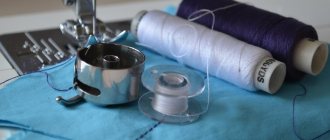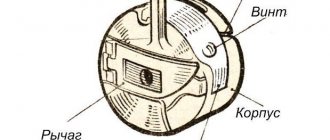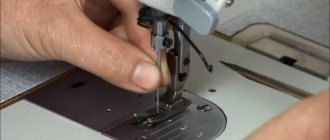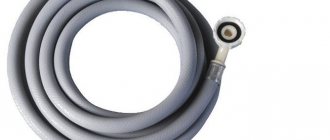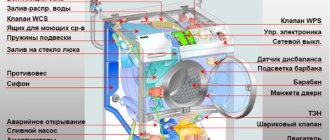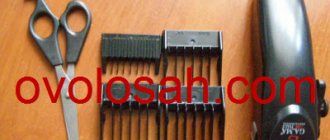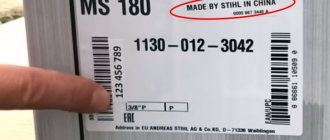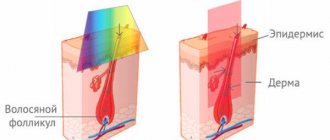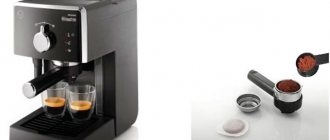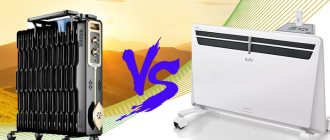If you repair, let alone sew, clothes yourself, sooner or later you will be faced with the question - Which overlocker to buy, how to choose it correctly among their abundance in stores?
Our website already has a similar article “Which overlocker to buy,” but we decided that additional information would not hurt, the main thing is that it helps you figure out how overlockers differ from each other besides the price, what a knitted overlocker is and which overlocker to choose for your home . At the end of the article, we will try to find out which overlocker can be considered the best, and whether there is such an overlocker at all.
A sewing machine cannot replace an overlocker
It is important to know that a sewing machine cannot overcast fabrics; in any case, it does it completely differently than an overlocker. Therefore, do not trust information that will convince you that this particular model of sewing machine can do everything, including sewing cut edges of fabric. There actually is such a machine and it’s called a carpetlock, and even then, it is rather the closest “relative” of the overlocker, and both the overlocker and the carpetlock have nothing to do with the lockstitch sewing machine, at least not “related”.
Look at this diagram. This is approximately how the overlock stitch of a three-thread overlocker is formed. With four and five thread overlockers this “pattern” will be even more complex. But you don’t need to know these subtleties; it’s only important to understand that if you want to sew fabrics with high quality, then you need to buy an overlocker for this.
Why a sewing machine will not replace an overlocker
Household models of sewing machines are not capable of sewing fabrics, or rather, they do it differently than equipment specially designed for these tasks. Two-thread machines only simulate an overcast seam. But there are still multifunctional sewing machines with overlock on sale. When the first devices capable of performing zigzag stitches appeared, they were used specifically for processing the cut edges of fabric. Subsequently, they began to produce overlocking feet specially designed for these purposes.
Overlock foot
Today you can install such an attachment on most models of sewing machines. They are either included with the device or purchased separately by the user. In addition, improved models can perform high-quality overlock stitches. It is these devices that are considered combined models of two devices. But in fact, they cannot handle all the functions of a conventional overlocker.
What is the difference between an overlocker and a sewing machine?
First of all, let's figure out how an overlocker differs from a sewing machine. A sewing machine has two threads, one of which is threaded into the bobbin. The threads, intertwined with each other using a shuttle, form a stitch. At the same time, for the stitching to be beautiful and strong, both threads must be securely pulled together in the stitch. As a result, the seam looks neat and even on both sides. Using a special foot and a zigzag stitch, you can overcast the cut edge on a regular sewing machine. But due to the fact that both threads are pulled together quite strongly in the stitch, such an “overlock” seam cannot withstand much stretching. Simply put, one of the threads may simply burst under load (sudden movement of a person). But with an overlocker this is practically impossible, because the overlock seam is quite strong, stretchable and elastic.
This is achieved due to the fact that the lower thread is not threaded into the bobbin, but directly from the bobbin into the looper. More precisely, two lower threads, since an overlocker has at least two loopers. However, an overlocker can work with two threads (needle thread and looper thread). The second looper is plugged with a special converter or expander (class 51 overlocker).
But three-thread overlockers are already an obsolete sewing technique. Modern overlockers use four threads. And due to this, many combinations are formed that allow you to make different overlock seams. For example, if you remove one needle (or turn it off) from a four-thread overlocker, it will work like a three-thread overlocker. If you put the converter on one of the loopers, it will work on two threads, etc.
Therefore, we can draw a small conclusion. You need to buy a four-thread overlocker (two needles and two loopers, as in the photo). Only such an overlocker can perform several overcast seams and even imitate a flat seam, such as on the hem of a knitted T-shirt.
Disabling one of the needles (right) and the looper (right) using a special plate (converter) will allow you to perform a two-thread narrow overlock stitch, which is indispensable when processing sections of tulle or knitted clothing “rolled” (rolled hem stitch). Hence the name - rolled seam. To choose the right overlocker, pay attention to the availability of this option.
Another advantage of four-thread overlockers is that they are designed for stitching and simultaneously overcasting knitted fabrics.
The main differences between an overlocker and a sewing machine
The main difference between an overlocker and a conventional sewing machine is that instead of the shuttle part, two loopers are installed, which perform its functions. In addition to them there are two knives, upper and lower, responsible for cutting and processing the edges of the product.
The design of current overlockers provides the ability to remove the knives when required, only by sheathing the fabric. Some models also have two pairs of loopers that can produce four-thread stitches. During operation, you can turn off one, two or three loopers at once, depending on how many threads you need to make a seam from.
Overlockers also differ in the appearance of the weaves. The loopers determine how the threads will be intertwined with each other, and how many lines will subsequently be created in each seam. Any stitch is made with one specific looper, but there is a three-thread overlock stitch that uses both loopers. It is designed for processing bulk materials.
A miniature tongue intertwines the threads, thereby determining the width of the overlock seams. If you remove it, you can get a three-thread border, the width of which does not exceed 2 mm. In addition to the tongue, you can install a small metal clip on the top looper, which guides the bobbin thread to the needle, helping to form a two-thread weave. The thread is threaded directly into the needle and lower looper.
Important! An overlocker may differ from a sewing machine in the number of threads required. That is, if an overlocker simultaneously uses up to five threads, then a sewing machine can cope with only two threads.
An overlocker uses threads in such a way that they do not break during processing of the material. This opportunity arises due to the direction of the threads not into the bobbin itself, but directly into the bobbin of loops. The result is a stitch that is strong and stretchable. The length of each stitch increases, and subsequently the threads are not used as economically as it would be with a sewing machine.
Knitted overlocker has a differential conveyor
Before choosing an overlocker, it is advisable to understand the technical details, for example, what is the differential of a knitted overlocker, what is a converter, rolled seam, chain stitch, etc. Then it will be easier for you to follow the suggestions of a store consultant and perhaps refuse to buy an overlocker with functions you don’t need . For example, why do you need an overlocker that has the ability to form a chain stitching seam? If you look at the treatment of burlap on trouser pockets, you will understand what it looks like. And if you don’t find it, then it will be formed like this. The overlocker creates a stitching seam, and an overcast seam is formed next to it. This is only possible by adding a special looper to the overlocker design. This overlocker is very convenient to use in mass tailoring, but it is not at all suitable for home use.
But the presence of a differential in an overlocker is an important and necessary design feature. And its meaning is that when sewing very stretchy fabrics, the edge of the fabric will not stretch under the foot and form “waves”, or, on the contrary, it will deliberately make the edge wavy. For example, if you need to process the bottom edge of a knitted skirt or the flounce of a blouse in this way.
The term “Differential fabric feeding” can be translated into understandable language as the uneven movement of both parts of the conveyor teeth (A and B), as a result of which the fabric under the foot can be gathered or, on the contrary, stretched.
You can choose how the rail should work (stretch the fabric or gather it) using a special switch. It indicates in numbers and graphically the degree of stretching or gathering. As a result, one more conclusion can be drawn. On a modern overlocker there must be differential advance of the fabric. This is especially important to consider when you buy a second-hand overlocker. The fact is that old models of overlockers rarely had this function, since there were no such fabrics.
The difference between an overlocker and a regular sewing machine
The stitch around the edge of the fabric is formed without the use of a shuttle device; there is a pair of loopers that form it. The overlocker is equipped with a pair of knives: upper and lower. They are designed for trimming the edge of the fabric being processed. Modern models allow the knife to be easily retracted, allowing certain operations to be performed without trimming.
Depending on the type of seam, the device can use two needles. Modern overlockers are equipped with the possibility of differentiated fabric feeding, which allows you to process knitwear with the highest quality possible. Using a differential conveyor, you can easily get some unusual effects in the form of assemblies or waves. At the same time, 2-5 threads can be threaded into the device.
If we talk about how to choose an overlocker, then you need to pay attention to several basic conditions.
Choosing an overlocker, additional characteristics
When we need to choose any equipment, we first of all focus on someone else’s opinion expressed on a forum or a review left in an online store. But most often such statements are too subjective, and sometimes overly emotional. Unsuitable threads or needles can cause the overlocker to work unstably, resulting in negative comments. Modern overlockers are manufactured using new technologies, which practically eliminate all sorts of defects of overlockers of old brands (stitch skips, thread breaks, etc.). The only thing that manufacturers focus on is the price. The lower the price, the fewer technical capabilities the overlocker will have.
But you may not need some of them. For example, turning off the overlock knife. The upper knife moves to the left and rises up. This way, when overcasting the cut edge, there will be no additional trimming of the fabric.
And this lever regulates the length of the stitch, that is, the density of the overlock seam. Perhaps the most inexpensive models will not have this option.
Another lever that not all overlockers have. With its help, you can adjust the width of the overcasting stitch (narrower, wider), which is important when making a rolled seam, but not at all necessary for standard overcasting of fabric.
A good creel is also a necessary thing. It is important that a coil of thread that accidentally falls off the spool does not cling to sharp corners and protruding parts of the overlocker body, otherwise the thread will break. As for the choice of threads, it is best to use threads on a high conical bobbin for an overlocker.
How to thread loopers
An overlocker with automatic threading saves a lot of time. By the way, the thread is threaded pneumatically or mechanically. However, it is much more reliable and efficient when both overlock loopers are clearly visible and threading can be done without difficulty using tweezers. We advise you to pay special attention to this, since you have to thread it often and the more convenient the access to the overlock loopers, the easier it will be to do this and the stronger your nerves will be.
Such a “trifle” as the threading pattern is also important. If you don't use your overlocker often, it's easy to forget how to thread, especially the loopers. It takes time to look for instructions and look at the diagram; it’s another matter when there is a bright and colored sticker glued to one of the covers or the body of the overlock machine, from which you can quickly and easily figure out how to thread the thread. By the way, when buying in a store, try threading the thread into the left looper yourself; perhaps after that you will decide to choose a different brand of overlocker. And in general, no one forbids you to try to sew pieces of fabric of different quality that you took with you in advance. Then you will be able to determine exactly which overlocker to choose.
Well, now you have an idea of how to choose an overlocker, what you need to pay attention to and what functions a modern knitted overlocker must have. All that remains is to find out which overlocker is considered the best and whether such an overlocker exists at all.
Modern four-thread overlock.
